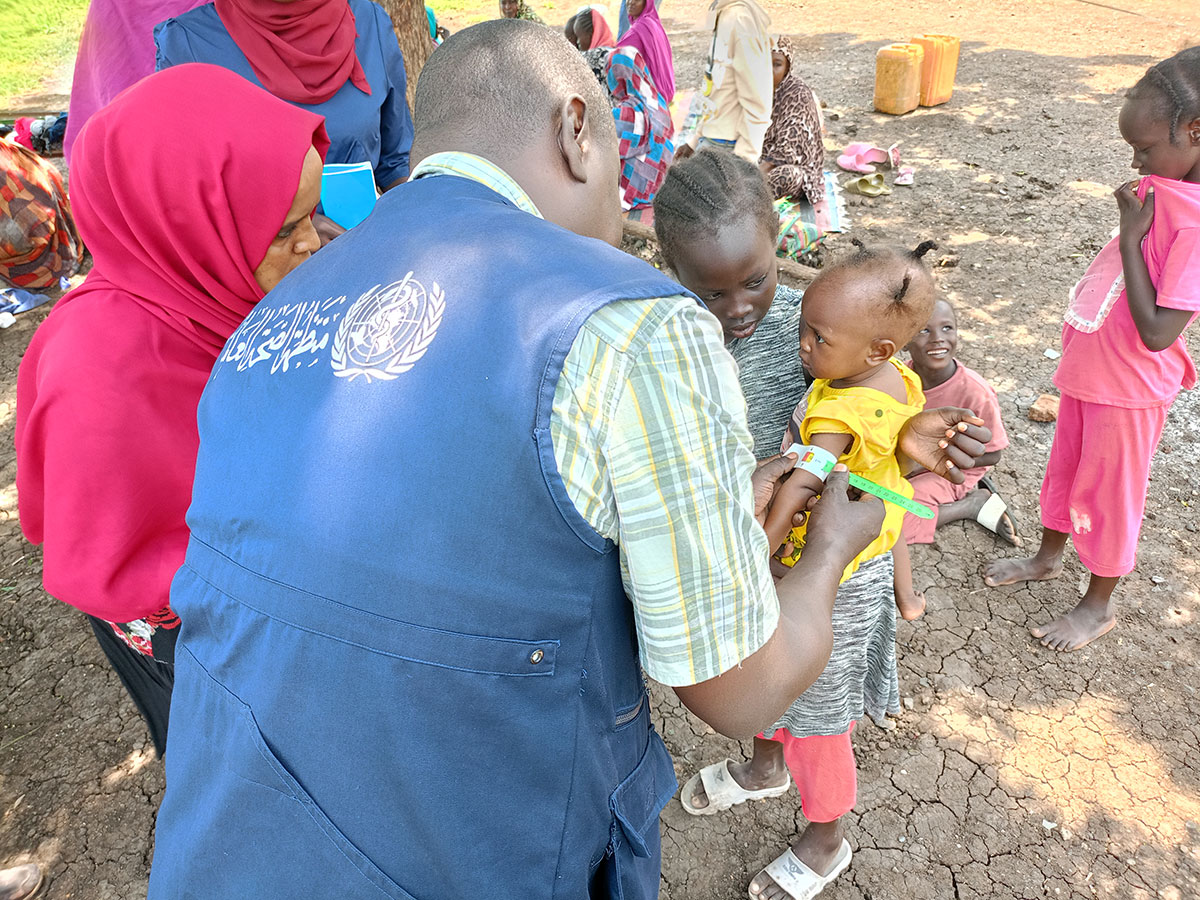 WHO support to the health emergency response for internally displaced people in Gedaref state, Sudan, in August 2023, during the ongoing conflict. Photo credit: WHO/WHO Sudan
WHO support to the health emergency response for internally displaced people in Gedaref state, Sudan, in August 2023, during the ongoing conflict. Photo credit: WHO/WHO Sudan
31 March 2024 – Nearly a year after conflict erupted in Sudan, close to 25 million people in the country need humanitarian assistance. Of this number, 18 million people face acute hunger – 5 million of them at emergency levels.
About 3.5 million children aged under 5 years – every 7th child in Sudan – have acute malnutrition, over 710 000 of whom have severe acute malnutrition (SAM). More than 106 000 of this number suffer from SAM with medical complications and require inpatient management at stabilization centres. If the situation does not improve, it is projected that in Darfur alone, 200 000 children will suffer from life-threatening hunger in 2024.
Of Sudan’s 161 stabilization centres, only 103 centres in 17 states are fully functional and able to provide life-saving treatment to children who have SAM with medical complications. Another 18 stabilization centres in 5 states are partially functional, while 40 centres have closed their doors entirely.
In 2024, WHO is providing medical supplies and technical support to 121 state-run stabilization centres in Sudan. WHO also supports 11 of these centres with their operating costs, including incentives for cadres, food for caregivers and hygiene supplies. WHO covered operating costs for 42 stabilization centres in Sudan in 2023.
WHO technical officers train stabilization centre staff and provide continuous technical support and supportive supervision in all accessible centres. WHO and partners also train volunteer health and nutrition cadres in nutrition assessment to identify and treat malnourished children who are displaced and living with relatives in host communities or in camps for displaced people.
Since the conflict erupted in April 2023, WHO has trained 1942 nutrition cadres (82% female) and distributed over 2300 SAM kits to help treat more than 28 000 children with SAM with medical complications. Training of the nutrition cadres and health workers covered the management of SAM inpatients; infant and young child feeding counselling; nutrition in emergencies; reporting nutrition status to the nutrition information and surveillance system; and child growth monitoring.
“Stabilization centres are a lifeline to more than 100 000 children who are severely acutely malnourished and suffer from medical complications. Keeping these centres open and running is a high priority for WHO,” said Dr Mohammad Dauod Altaf, WHO Sudan Health Emergency Lead. “Our dedicated staff are on the ground, in the communities and in the stabilization centres, to support these centres.”
As well as the dangers posed by malnutrition itself, malnourished children, and pregnant and breastfeeding women are at higher risk of serious illness or dying from diseases. Hunger weakens the body’s defences and opens the door to disease, which can lead to complications and even death. Malnourished children are at increased risk of dying from diarrhoea, pneumonia and measles, especially in settings where they lack access to life-saving health services.
WHO continues to provide technical assistance and expert advice as well as critically needed supplies for the treatment of SAM with medical complications. We use every available avenue to get supplies to wherever they are needed, but insecurity and bureaucratic obstacles continue to affect the timely distribution of life-saving medicines and medical supplies.
WHO is able support the life-saving operations of stabilization centres since the start of the war thanks to the generous financial assistance of the Italian Development Cooperation, Japan and the United States Agency for International Development’s Bureau for Humanitarian Assistance.


